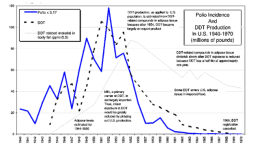Whenever you bring up the PCR test, you admit that it can be replicated within a host cell since the entire basis of the PCR test is that it requires more than one of the viruses to run the test.
Not sure how you arrived at that conclusion. From Mark Bailey's "A Farewell to Virology - Expert Edition":
**
PROFESSOR STEPHEN BUSTIN’S PRIMING OF A PCR PANDEMIC
Scientists have a tendency to assume that everything outside of their domain of interest is true and that they can just rely on it.
— David Crowe following his interview of Stephen Bustin in April 2020.137
To sustain the illusion of the COVID-19 ‘pandemic’, cases were required. These were provided by the world’s largest ever human ‘testing’ programme involving billions of PCR kits distributed around the world. It remains unclear to us as to why Stephen Bustin, who is a “world-renowned expert on quantitative PCR, and his research focuses on translating molecular techniques into practical, robust and reliable tools for clinical and diagnostic use,”138 failed to decisively point out the inappropriate use of the PCR process. Bustin was the lead author for the 2009 publication,“The MIQE Guidelines: Minimum Information for Publication of Quantitative Real-Time PCR Experiments,”139 in which the key conceptual considerations for real-time PCR experiments were outlined as follows:
- 2.1 Analytical sensitivity refers to the minimum number of copies in a sample that can be measured accurately with an assay, whereas clinical sensirivity is the percentage of individuals with a given disorder whom the assay idenrifies as positive for that condition...
- 2.2 Analytical specificity refers to the qPCR assay detecting the appropriate target sequence rather than other, nonspecific targets also present in a sample. Diagnostic specificity is the percentage of individuals without a given condition whom the assay identifies as negative for that condition.
Aside from the issue of specificity, it was not well publicised that the world-expert on PCR said to David Crowe in April 2020 that, (even on virology’s own terms,) calling a coronavirus PCR result “positive” at 36-37 cycles, as was happening around the world was, “absolute nonsense. It makes no sense whatsoever."141 However, the PCR fraud was even more apparent when Eric Coppolino interviewed Bustin on Planet Waves FM in February 2021.142 Coppolino’s intention was to find out more details about the problematic reverse transcription (RT) step of the RT-PCR process but he was stunned after the interview to realise that what he thought was a sometimes inaccurate test was completely fraudulent.143 Bustin appeared uncomfortable when Coppolino pointed out that all positive PCR results were being called a, “confirmed case of infection,” even if they had no symptoms.144 Instead of admitting that the diagnostic specificity of the PCR kits had never been established, Bustin offered peripheral explanations such as claiming that, “ICUs are overrun at the moment.”
He further defended the PCR protocols in use with the assertion that, “this pneumonia was being caused by this virus. And this virus started popping up where more and more people were coming down with the same symptoms. And these primers were detecting that virus.” When Coppolino pushed him on the lack of virus isolation to be able to make these claims, Bustin responded that, “the way the sequence was established by taking the samples from the original patient, growing up something and then sequencing it and then disassembling the sequence and what came out of that was the SARS virus.” Unfortunately, Bustin lent support to virology’s misuse of the word ‘isolation’ and the loose terminology involved in detecting a “virus.” The crucial issue is that it doesn’t matter how well designed any primers are — if the provenance or significance of the genetic sequences being amplified through the PCR are unknown, then nothing more can be concluded by their mere presence. Bustin can reassure the world about the potentially very high analytical performance of a PCR protocol but the establishment of its diagnostic performance is where the rubber meets the road. Even if SARS-CoV-2 had been shown to physically exist and the PCR was accepted as a valid diagnostic tool, Bustin would have to admit that none of the PCR assays have been developed as his MIQE Guidelines specify and none qualify as being clinically-validated.
It was a surprise during the same interview that he denied any prior knowledge of the false pertussis outbreak in Dartmouth-Hitchcock, New Hampshire in 2006 when the PCR kit that was rolled out resulted in a 100% false positive rate.145 Bustin claimed to have learned about it for the first time just days before the interview, some 15 years after the fact, when he read about it on Coppolino’s website, from an article provided for the purposes of the interview. Yet the incident was well known and received coverage in The New York Times, with comments from many public health and diagnostic test professionals.146 By 2006, Bustin was a Professor of Molecular Biology and it is a small wonder that the PCR specialist had not had any enquiries from medical colleagues in 2006 when the incident happened. Indeed, at the time there were very few PCR experts in existence to contact and it was an early indication of how the PCR could be catastrophically misused as a clinical diagnostic tool. If that wasn’t bad enough, it related to an incident where the purportedly causal microbe (the bacterium Bordetella pertussis) is something that can be physically isolated and its genetic sequences confirmed for the PCR to be calibrated against. In contrast, the SARS-CoV-2 PCR protocols are simply calibrated to genetic fragments of unknown origin. When Coppolino pressed him on this point Bustin responded, “well, you know, this is a standard way of doing this so I really can’t comment any further on that, except that to me that’s perfectly acceptable and that’s the way to do it.”147
By the time Bustin was interviewed by Coppolino he had already co-authored and submitted a paper titled, “COVID-19 and Diagnostic Testing for SARS-CoV-2 by RT-qPCR—Facts and Fallacies” that was published later in February 2021.148 In this paper, Bustin and co stated that, “[theCorman-Drosten] assay worked and was specific and demonstrated astounding sagacity and selflessness by the scientists involved, as well as the remarkable speed with which PCR-based tests can be developed and put into practice.” Ignoring the fawning praise, the obvious question remains, is specific for what? Were Bustin and co implying that the PCR tests are specific for (a) short targeted RNA sequences, (b) a coronavirus known as SARS-CoV-2, or (c) the WHO-invented disease known as COVID-19? The Corman-Drosten paper only established the analytical specificity for amplifying some selected RNA sequences, it had nothing to do with the establishment of a virus or diagnosing a disease. The developer of the MIQE Guidelines surely knows that of the three, only the first was scientifically established and nothing was, or has been, validated for clinical application. And yet his paper goes on to make the ridiculous non sequitur that, “PCR testing is highly suitable for large scale testing, as demonstrated daily by the millions of tests carried out to date.” Has Bustin forgogen that the ‘tests’ are simply a molecular amplification tool? As the inventor of the PCR, Dr Kary Mullis warned in 1993, “I don’t think you can misuse PCR, no, the results, the interpretation of it [is misused].”149
The PCR simply amplifies selected genetic sequences and the molecular reaction itself has no capacity to determine their provenance or the relevance of their presence. If a particular PCR protocol is performed correctly and has a known 100% analytical sensitivity and specificity, a positive result can be said to have done nothing more than confirmed the presence of a target sequence. However, if claims are being made that the PCR is a diagnostic tool, it should be obvious that clinical validation studies would need to be performed before the test was introduced into clinical practice. The Corman-Drosten paper skipped this step and the WHO accepted the fraud by placing versions of the PCR protocol on their website on the 13th and then 17th of January, 2020, before the paper had even been published.150 After that the PCR was simply used via circular reasoning to make claims about diagnosing “infections” in people.
The next phase in the early stages of the alleged pandemic involved “experts” such as Australian Infectious Diseases Specialist, Associate Professor Sanjaya Senanayake promulgating unfounded claims about the accuracy of the tests to the public. In an interview on the 26th of April, 2020 he stated that with regard to COVID-19 testing, “there’s no real gold standard to compare this to... for COVID-19 we don’t have a gold standard test so so the current tests we are using, the PCR tests...they’re our gold standard, but trying to work around that, we think that it’s probably picking uparound 70% of cases.”151 Senanayake implied that if you don’t have a gold standard you can just assume that a new PCR test can validate itself. However, this goes against all scholarship regarding test validaEon. It is unclear through this departure from the established tenets of validation logic how he calculated that it worked “about 70%” of the time, not to mention the mental gymnastics involved in a “gold standard” that detects itself only 70% of the time. It would be agreed with his inadvertent admission that, “there’s no real gold standard” in COVID-19 testing because the real gold standard is something that doesn’t exist — that being the physical isolation and proof of a viral particle.
**
Source:




